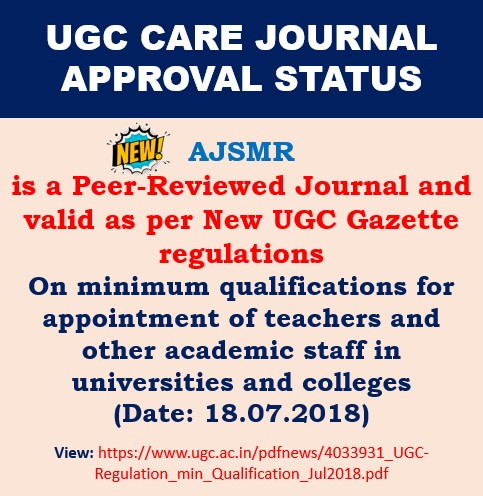Original Research Article I Volume 3 I Issue 2 I 2017
A study on antimicrobial activity and phyto chemical constituents of some phyllanthus plants in South Indian region
Ananthagiri Komuraiah and A. Ragan
The American Journal of Science and Medical Research; 3(2); 25-29
DOI:http://dx.doi.org/10.17812/ajsmr3207
Abstract:
Phytochemical tests and Antibacterial activity of the methanol extracts of four Phyllanthus species (P. tenellus, P.emblica, P. simplex and P. acidus) are evaluated. The diameter of inhibition zones ranged from 5 - 23 mm is found in agar well diffusion assay. Phyllanthus tenellus showed maximum activity of 23 mm. The minimum inhibition concentration (MIC) and minimum bactericidal concentration (MBC) observed for Bacillus stearothermophilus, Staphylococcus aureus, Bacillus subtilis, Micrococcus luteus, Salmonella typhi, Enterobacter aerogenes, Proteus mirabilis, and Proteus vulgaris. P. tenellus and P.emblica showed the lowest MIC (30 μg/ml) as well as MBC (40 μg/ml) and thus an effective inhibitor of the tested bacteria. Alkaloids, Lignans, Triterpenoids,Tannins and Phenols were detected in all the four tested plants.
Keywords:
Water, physico-chemical parameters, seasonal variations, Pakhal Lake
References:
[1]. Ahmed I, Mehmood Z, Mohammad F (1998). Screening of some Indian medicinal plants for their antimicrobial properties. J. Ethnopharmacol.62: 183-193.
[2]. Calixto JB, Santos AR, Cechinel FV, Yunes RA (1998). A review of the plants of the genus Phyllanthus: their chemistry, pharmacology, and therapeutic potential. Med. Res. Rev. 18: 225-258
[3]. Davis J (1994). Inactivation of antibiotics and the dissemination of resistance genes. Science 264: 375-382.
[4]. Desta B (2005). Ethiopian traditional herbal drugs part 11.Antimicrobial activity of 63 medicinal plants. J. Ethnopharmacol. 100: 168-175.
[5]. Dhiman RK, Chawla YK (2005). Herbal Medicine for Liver Diseases.Dig. Dis. Sci. 50: 1807-1812.
[6]. Gibbs RD (1974). Chemotaxonomy of flowering plants. μgill-Queen’s university press, Nontreal and London I: 523- 619.
[7]. Houghton PJ, Woldemariam TZ, O’Shea S, Mullen JE, Rostron T,Bantvala JE, Walker E, Thyagarajan SP, Soloman S , Yeap Foo L(1999). The anti-HIV activity of an aqueous extract and polyphenolic compounds of Phyllanthus amarus J. Pharm. Pharmacol. 51:100.
[8]. Iqbal MCM, Meiyalaghan S, Wijesekara KB, Abeyratne KP (2001).Antifungal activity from water extracts of some common weeds.Pakistan J. Bio. Sci. 4 (7): 843 – 845.
[9]. Kabir OA, Olukayode O, chidi EO, Christopher C, Fasure KA (2005).Screening of crude extracts of six medicinal plants used in south-West Nigerian unorthodox medicine for anti-methicillin resistant Staphylococcus aureus activity. Comp. Alt. Med. 5: 6.
[10]. Komuraiah.A, Krishna. B Narasimha Rao. N Ragan A, Raju1. V. S and Singara Charya. M. A (2009). Antibacterial studies and phytochemical constituents of South Indian Phyllanthus species, African Journal of Biotechnology Vol. 8 (19), pp. 4991-4995.....
Article Dates:
Received: 2 April 2017; Accepted: 4 May 2017 ; Published: 30 June 2017
How To Cite:
Ananthagiri Komuraiah and A. Ragan. 2017. A study on antimicrobial activity and phyto chemical constituents of some phyllanthus plants in South Indian region. The Ame J Sci & Med Res, 3(2):25-29. doi:10.17812/ajsmr3207.



